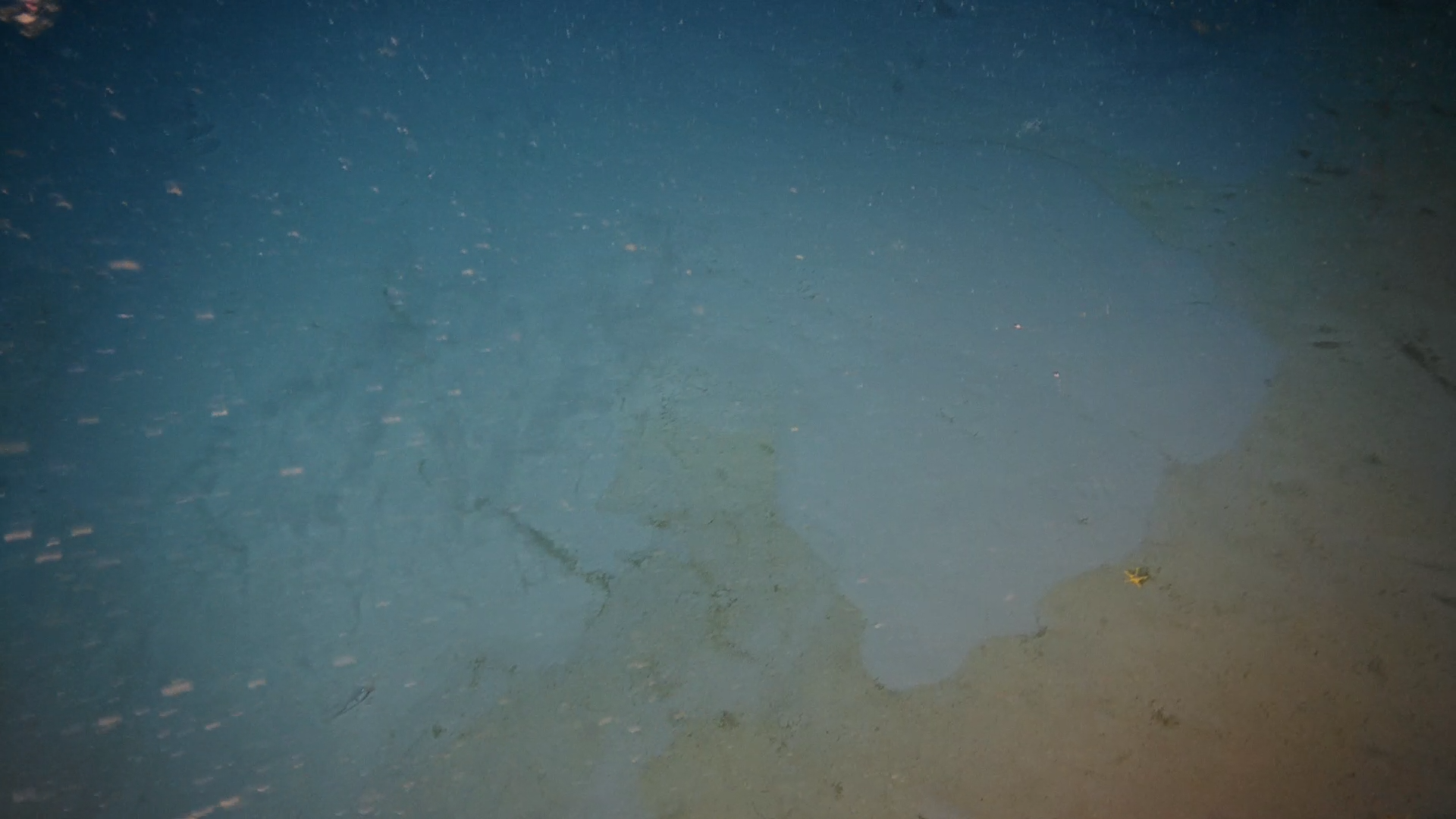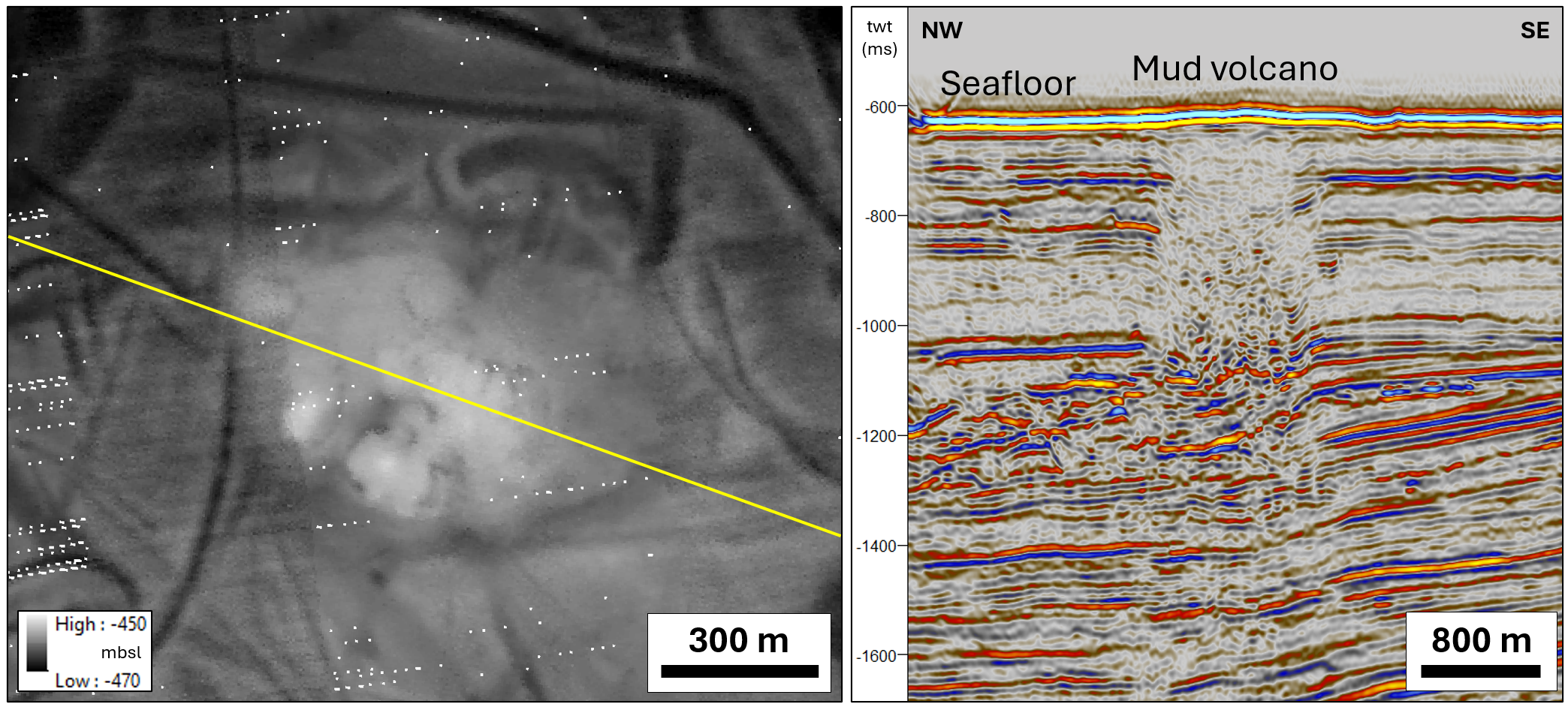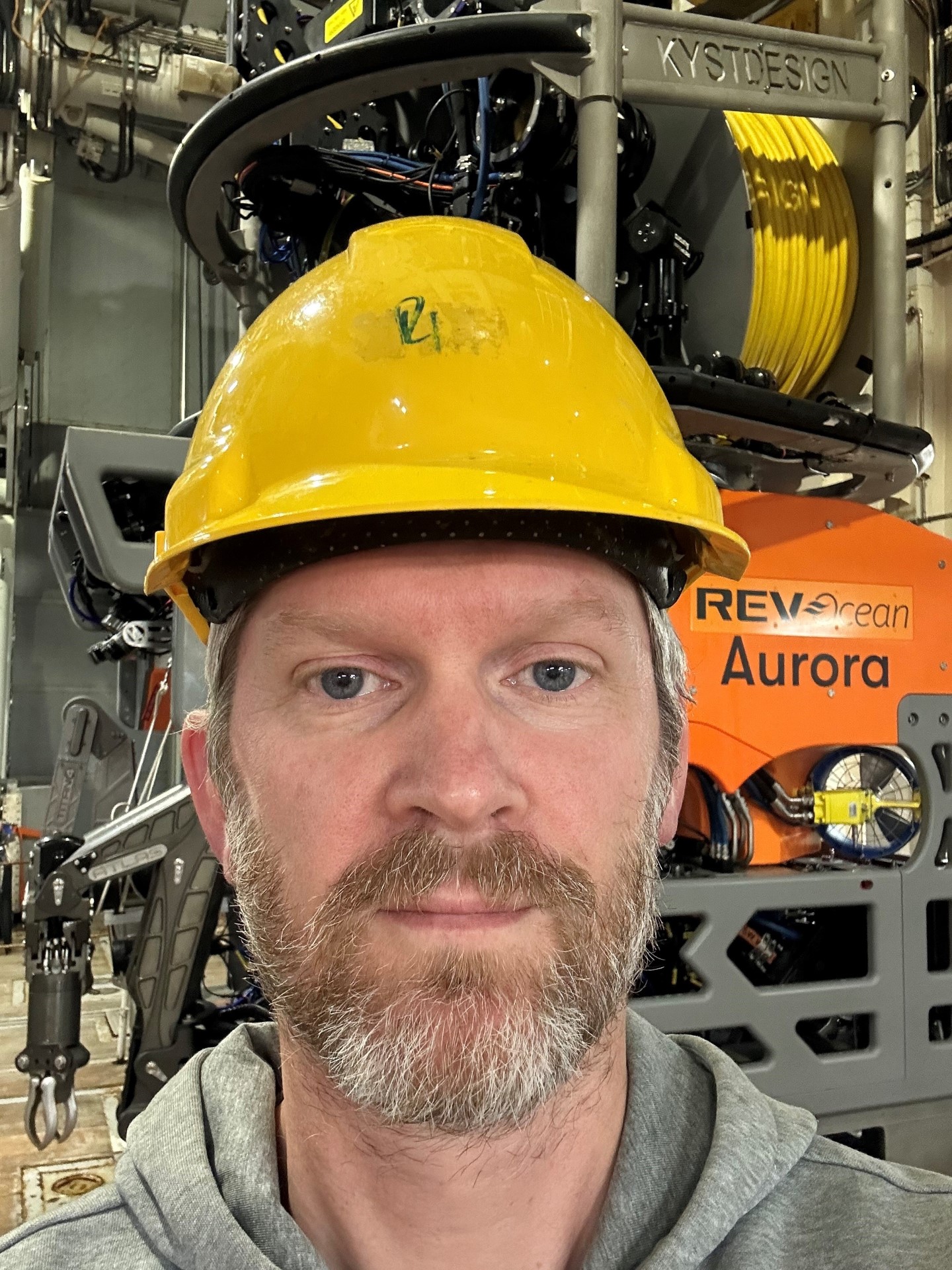Many new mud volcanos discovered in the western Barents Sea

ROV photo showing fresh mud (light grey) that has recently run out over older seabed (darker golden grey).
6/6/2024 As many as ten new mud volcanos have been proven in water depths of 440-480 meters in the western Barents Sea.
The mud volcanos were discovered by the EXTREME24 expedition using the RV Kronprins Haakon research vessel. Rune Mattingsdal, geologist in the Norwegian Offshore Directorate, participated in the last part of the expedition, which took place under the direction of the UiT The Arctic University of Norway.
“The main objective of the research expedition was to conduct further studies of the Borealis mud volcano, which the Norwegian Offshore Directorate helped discover last year,” Mattingsdal says.
Borealis is the second mud volcano recorded on the Norwegian continental shelf (NCS).
A mud volcano is an accumulation of clay or other fine-grained material that has flowed out together with gas, water and sometimes oil, either on the seabed or the earth’s surface.

Seabed map (unprocessed, ten-metre resolution) of one of the mud volcanos that was discovered. The mud volcano shown here is a mound on the seabed, around 600-700 metres in diameter, about seven metres higher than the surrounding seabed at most, with obvious signs that the surrounding seabed has been covered by mud that has built up the mound on the seabed. On the right: Seismic line through the mud volcano showing clear seismic indications of mud that comes up in a wide area under the mud volcano. The source of the mud appears to be shallow, no more than around 400 metres under the seabed.
The expedition aimed to investigate nearby areas, in addition to taking a closer look at Borealis.
“We wanted to see whether it was possible to document more mud volcanos, and we wanted to map and take samples from natural gas seepages,” Mattingsdal explains.
As many as ten new mud volcanos were discovered in an area in the western Barents Sea that was part of the APA scheme in 2023. Several mounds on the seabed had been selected in advance for further investigation, due to their interesting seismic imaging. The volcanos were verified using multi-beam echo sounding and investigations using ROVs (remotely operated vehicles).
“Among other things, both gas and sediment samples have been taken from most of the mud volcanos. These samples will be sent for biostratigraphic and geochemical analyses,” Rune says.
The objective is to confirm the age of the mud and to determine where gas and potential other hydrocarbons might be coming from.
“The mud volcanos around the world are often associated with hydrocarbon deposits, and may therefore be of interest in connection with exploration for oil and gas,” Mattingsdal says.

Rune Mattingsdal is a geologist in the Norwegian Offshore Directorate.

The mud volcanos were discovered by the EXTREME24 expedition using the RV Kronprins Haakon research vessel. Here from the dock in Stavanger, Norway. (photo: Rune Mattingsdal)
Director Communication, public affairs and emergency response
Updated: 6/6/2024